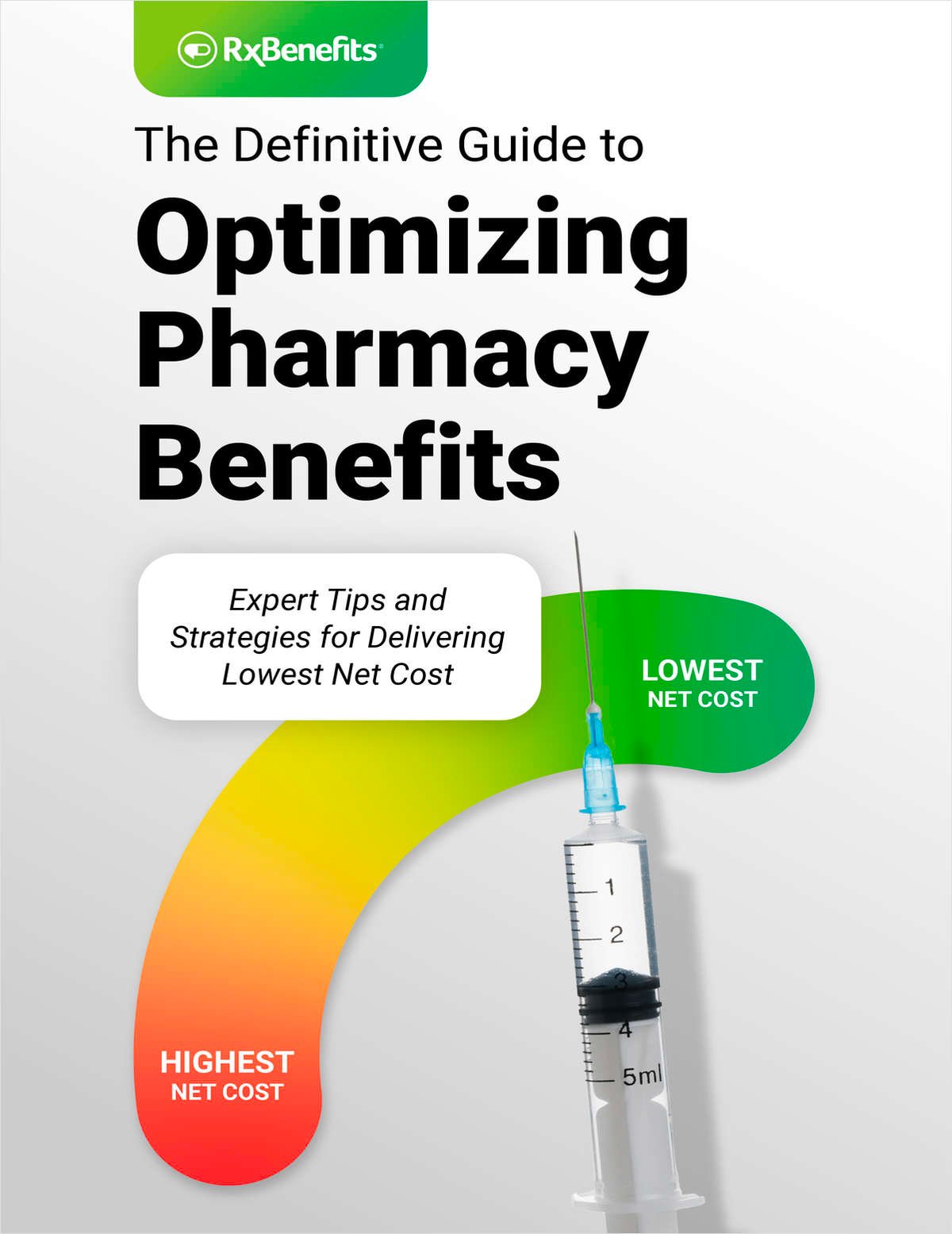The only thing people in the benefits biz seem to be talking about is the implications of health reform. What will happen (if, of course, it still does happen)? Will employers drop coverage for their employees? What about grandfathered status? And, most importantly, just how much is this whole reform thing gonna cost us?
As to the last question, most reports point to a lot.
According to new research from global insurance broker Willis Group Holdings, a handful of employers say their costs have risen in excess of 5 percent since 2010 in accordance with—and anticipation of—reform.
“In PPACA's overarching goal of providing access to health insurance coverage, some of the first changes were made universally to existing health care plans. The goal of these plan changes was to expand benefits for those currently covered, help keep them covered longer, and set the groundwork for those who'll soon be covered,” explains Annette Bechtold of Digital Insurance. “And this expansion of coverage does carry an additional expense.”
Despite what's been said about minimal effects on businesses, “the PPACA continues to present extraordinary challenges both to employers and their advisers,” says Donna Joseph, CEO of Rhodes-Joseph & Tobiason Advisors.
“The Willis study reinforces what we've been hearing—that health care costs continue to rise, that PPACA is thought to be one of the significant reasons for the cost increases, that employers are asking their employees to pay more for the coverage, and that the majority of employers have not yet developed a health care strategy to comply with the law,” Joseph says.
Though most of the 2,300 surveyed employers haven't yet calculated the cost of compliance with the PPACA, of those who did, more than half said their total health care costs had risen at least 2 percent as a direct result of the reforms. And 15 percent said the increases were north of 5 percent. Most implied increases certainly were coming.
“Now that the health care reform act has entered the implementation phase, the costs and benefits associated with the act are coming into greater focus for employers,” says Jay Kirschbaum, practice leader for Willis Human Capital Practice. Most employers realize increased costs were coming, he says, and employees will have to get ready as well.
The reasons
Employers Willis surveyed report their most significant cost drivers are the provision of adult child coverage up to age 26 and the removal of the annual/lifetime limits for “essential health benefits.”
More than 25 percent of respondents saw cost increases from removing pre-existing condition exclusions for children under age 19, and 32 percent report cost increases from removing cost-sharing on preventative services.
Increases associated with those changes, Bechtold says, have already averaged somewhere south of 5 percent, though increases “vary based upon plan and marketplace.”
“These costs are typically added to the annual increase in the cost of medical goods and services,” she says. “As has been the case for more than a decade, employers annually go through the balancing act of the increasing costs versus the amount of coverage they receive and decide how to share that cost between the business and their employees.”
But there's still the big unknown—which in this case is 2014, when major health plan changes will be implemented. And that's a scary question mark for employers.
Sorry, employees
So with the increases, who will bear that extra cost? The not-so-shocking answer is the employees. Nearly two-thirds of employers say employee contributions will jump because of reform.
In other efforts to curb costs, a third of respondents think other employers will reduce coverage to the lowest-cost package that will avoid the “pay-or-play” penalty and rely more on wellness programs.
“While other surveys and publications have found that employers seem reluctant to be the first to drop coverage, reshape work hours, reduce coverage or reduce company financial support for certain benefits, this survey indicates respondents believe other employers will take some of these actions,” the survey notes.
The number of Americans getting health insurance from their employer continues to drop, other reports confirm. Gallup numbers reported a record low 44.6 percent received employer-sponsored coverage in 2011. And remember that controversial McKinsey survey from last year? It said one-third of employers would drop health coverage after 2014, though many were quick to dismiss the prediction. But other surveys since have shared the same sentiment. A HighRoads study, for example, found employers will drop coverage in 2014 if their competition does.
Calculating the costs
Still, it's interesting to note that though employers said costs will increase, many of those surveyed admit they haven't even calculated the costs yet.
Neither of those two facts is surprising, brokers say.
Besides the cost from premium increases, explains Danielle Kunkle, the costs from increased administrative tasks related to complying with the law are—and will be—taking an obvious toll on businesses' finances. That's partly because businesses don't yet know how to comply with it.
“This is hard for employers to calculate because they have to wait for the rules to be released and some of the provisions have been modified or struck down entirely,” says Kunkle, a Medicare adviser at Boomer Benefits in Fort Worth, Texas.
The government, critics of reform will tell you, hasn't yet worked out the logistics, and that's hurting businesses trying to get a grasp on their bottom line.
Kunkle points to examples: The W-2 and the 105(h) reporting rules were delayed. The 1099 reporting for small employers was eliminated. So was the CLASS Act, which would have required employers to make a decision about whether to offer the government's LTC insurance program—and if so, deduct the premiums from their employees' paychecks.
“The rules about the uniform explanation of coverage, which employers will be required to give to employees, are being worked on right now,” she says. “It's hard to calculate costs because of all this uncertainty.”
Uncertainty was an overarching theme in the survey results. Again, not surprising, considering the basics of health reform simply confuse most people.
During the week of the Supreme Court hearings in late March, a Harris poll found most Americans don't know what is and isn't part of health reform.
“This bill is so convoluted and is pieced out to occur over such a long timeline, that there's a considerable level of ambivalence over it,” Kunkle says. “Many people think or hope the changes won't affect them, or that it won't matter until 2014 anyway, so they procrastinate getting their brain around it.”
Many argue there hasn't been enough education on reform. Employers are finding the state exchanges difficult, and the government only released the exchange blueprint in March.
Joseph agrees: “One of the key reasons for this 'wait-and-see' stance may be that there is a lack of information about state exchanges, and, as the Willis study states, 'the lack of guidance and the lack of developmental progress make it difficult for employers to incorporate a strategy element that would rely on the exchanges,' she says.
Plus, there's the thought that it could all change “if either the Supreme Court strikes down the individual mandate or we have a change in our administration in November,” Kunkle says.
The survey also notes that less than half of employers have developed any kind of compliance strategy. Employers also say they're waiting to communicate health reform changes to employees, partly because they don't know what to tell them.
But things should be clearer within the next 12 months, the survey notes, as 40 percent of employers will be “reviewing their strategies for internally communicating benefit rewards. We think the next 12 months, as more information is known, will see a significant rise of employers completing their strategic review of health care in relation to their total rewards program, finally enabling them to make what may prove to be momentous decisions about the future of employer sponsored health benefits for 2014 and beyond.”
It's all about the cost
Not unexpectedly, when asked what would drive an employer to reassess its benefits strategies, by far, the predominant response is “cost” in one form or another—health cost, financial performance, corporate pressure to reduce costs, etc. Around 90 percent of employers say they'll likely change their health coverage strategy if there are any changes in their financial or market performance.
Respondents say they're more than twice as likely to redraft their health coverage strategy in response to unanticipated cost increases as they are to redraft health strategy when faced with an increase in voluntary employee turnover. With employer focus on cost and the organization's financial performance, the survey notes, responses appear reactive rather than proactive.
That reactionary stance, Willis says, suggests a majority of respondents will try to manage health care reform within a strategy of maintaining the status quo—that is, until cost increase or corporate performance declines.
Other findings
The Willis survey also finds another inconvenient truth: Though most employers didn't want to, they're losing their grandfathered plan status.
Survey respondents indicate that into the second year of health care reform implementation, less than 30 percent of employers were able to maintain grandfathered status of their health care plans—a “rapid loss” that far outpaces what the Department of Health and Human Services had predicted.
The department in 2010 projected that 78 percent of employers would retain their grandfathered status by the end of 2011, that 62 percent would by the end of 2012 and that 49 percent would by the end of 2013.
Kirschbaum says that's one reform truth that really caught employers by surprise. “Employers didn't think they had to be overly concerned about it,” he says, pointing out that reform was sold on the basis of keeping the plan you have and retaining grandfathered status.
“But as it turns out, many plans weren't able to stay grandfathered because of increasing costs related or not related to health care reform. They had to make changes to their plans in relation to those costs which exceeded the amount that they could change their plans and still retain grandfathered status.”
Using exchanges
Willis research also found that despite having little understanding regarding the state exchanges, many employers expect to use the exchanges for their employees. That's despite their desire to maintain group medical benefits for employees.
For some, the only question is when that will happen. Respondents appear to take incremental steps in compliance rather than big steps to reach a particular strategic goal, an approach that aligns most closely with employers who will be more likely to rely upon state-based exchanges in the future, the survey notes.
This interest is echoed by a J.D. Power and Associates study that found there's interest among health plan members in private health insurance exchanges, in which an employer might provide employees with vouchers for purchasing health insurance independently. About 41 percent of employer-insured health plan members indicate they would use this approach if it were available.
|Moving forward
Most employers, Kirschbaum says, are scrambling to keep up with what's happening, and that's making it more than difficult to make a strategic approach.
But that's the one thing employers need to be doing, Bechtold says. As reform takes on a legacy based on confusion, “one thing is certain: Taking a reactionary stand severely limits the opportunities for future success. Proactively understanding the rules and obligations, considering options, and incrementally making changes will help ensure that optimal solutions are selected, and employees—along with their families—will have time to assimilate to them.”
“For many employers, preparing for these costs has been difficult. As with any new law, it takes time for all the rules to be established,” Bechtold says. “To better prepare for the implementation of the additional provisions of the law, it will be imperative to partner with the right adviser.”
Continue Reading for Free
Register and gain access to:
- Breaking benefits news and analysis, on-site and via our newsletters and custom alerts
- Educational webcasts, white papers, and ebooks from industry thought leaders
- Critical converage of the property casualty insurance and financial advisory markets on our other ALM sites, PropertyCasualty360 and ThinkAdvisor
Already have an account? Sign In Now
© 2024 ALM Global, LLC, All Rights Reserved. Request academic re-use from www.copyright.com. All other uses, submit a request to [email protected]. For more information visit Asset & Logo Licensing.








